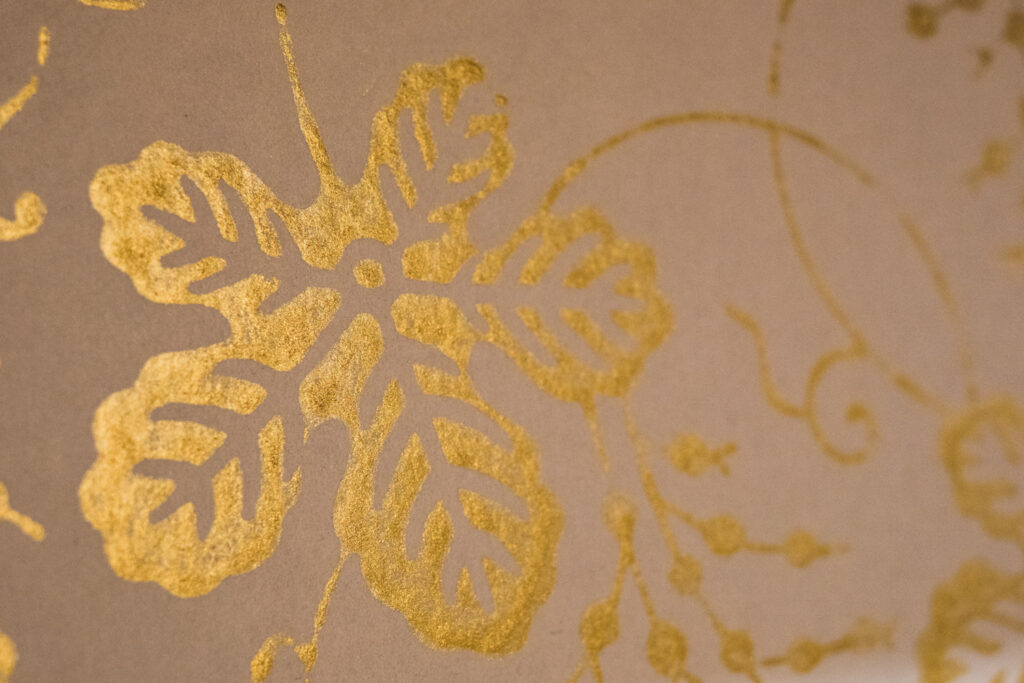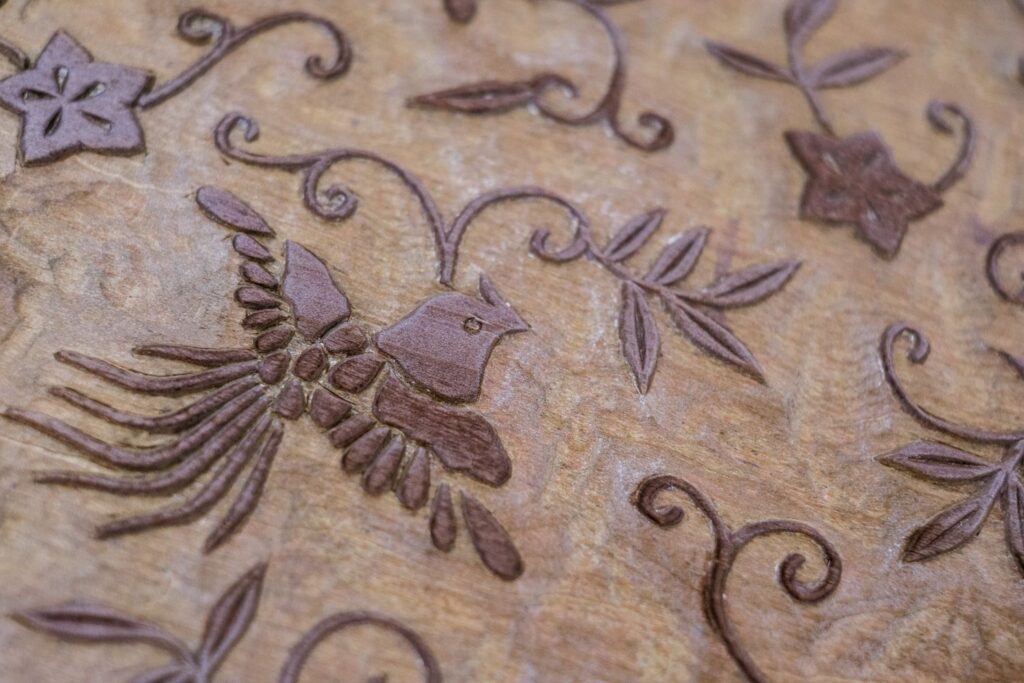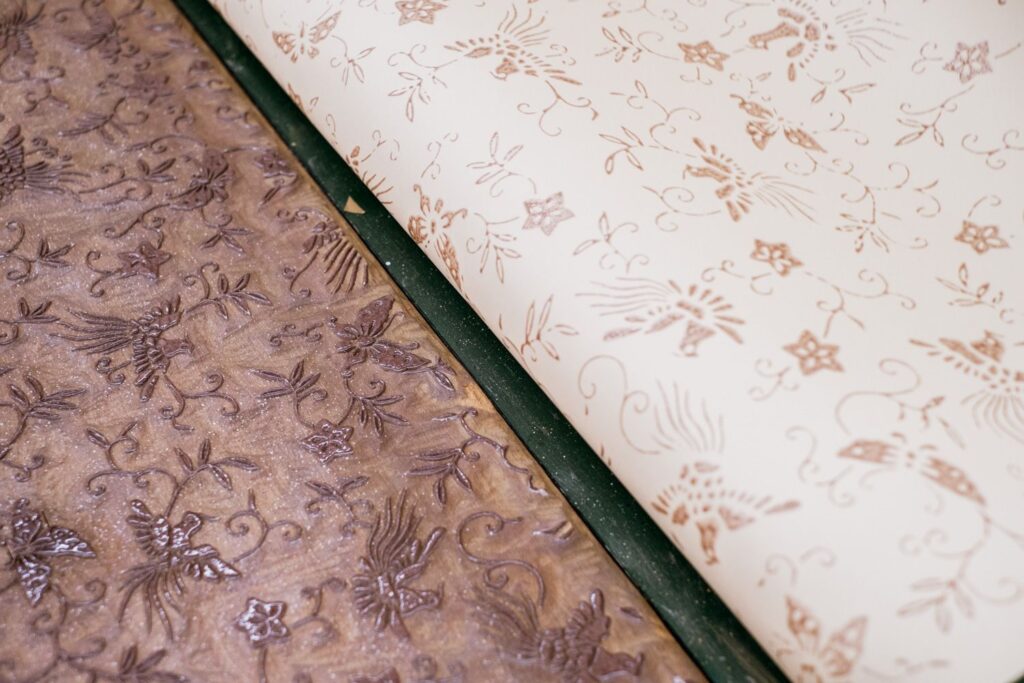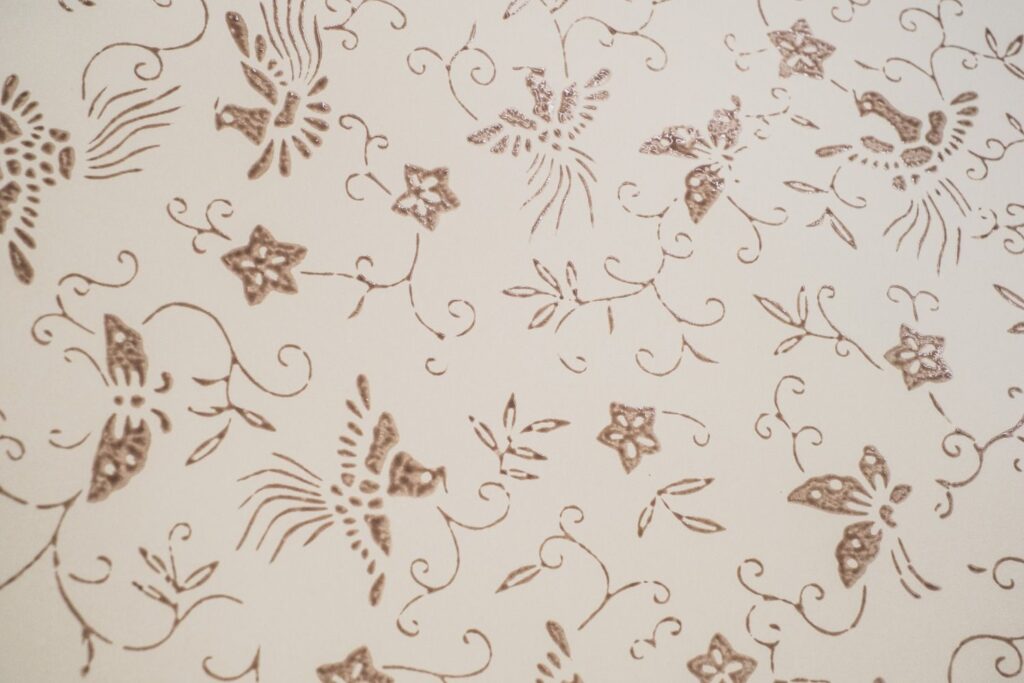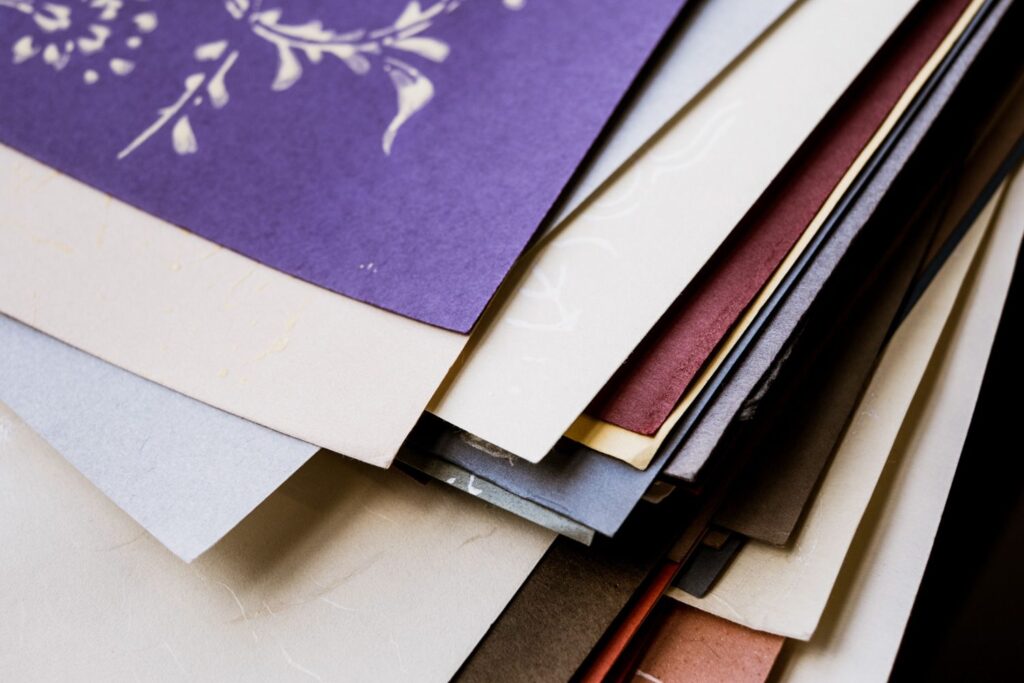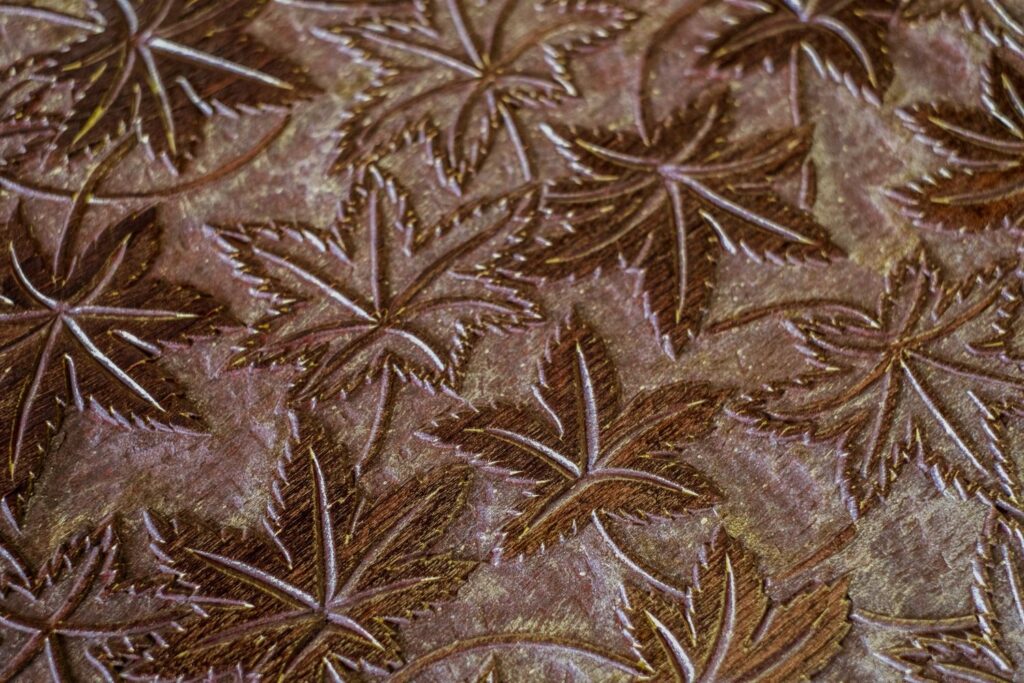Blog
Kyo-karakami: a short history
2021/12/28
Note: this is the second in our series of articles focusing on the fascinating traditional craft of Kyo-karakami and its place in modern life. Check the previous article here:
Studio visit to Maruni, Kyo-karakami maker
After our previous post about a visit to Maruni, you’re probably wondering about how exactly the karakami tradition was established in Japan.
The word “karakami” itself literally means “Chinese paper” due to the fact that this way of paper decoration originally came to Japan from Tang dynasty China during the Nara Period (8th century). It quickly became popular with the nobility at the Imperial court of Heian (present-day Kyoto). First used as a support for writing classic poetry, karakami paper was adapted for fusuma (sliding doors) and shoji (wooden lattice frame covered with paper) decoration.
The oldest karakami patterns reflect the aesthetics of aristocratic culture and include arabesque motifs, plant and flower designs, as well as water waves and clouds. The most popular motifs of the samurai era karakami appear to be geometrical patterns and pines – the designs that symbolize authority and austerity of military culture.
During the Edo Period (1603-1868), karakami was popularized and new centres of production have appeared in Edo (today’s Tokyo), answering its increase in demand by merchants and commoners. This new type of karakami was called Edo-karakami to distinguish it from Kyoto-style karakami and includes various additional techniques such as stencilled small pattern designs and powdered gold and silver decoration.
In the modern setting, karakami paper is still used for covering fusuma sliding doors in traditional Japanese interiors of private residences, tea houses and pavilions, temples and shrines, as well as wallpaper for Western-style interiors, as stationery and even as pieces of art for decorative purposes. All karakami paper sheets are created one by one by hand, so each sheet is unique and carries a human touch.
If you plan to come to Kyoto, you have a possibility of printing your own Kyo-karakami sheets which you’ll be able to use as wall art at home, or, at the very least, as a memory of an unforgettable encounter with one of the oldest Kyoto traditional crafts.
Book your experience here: Atelier visit & small-scale karakami printing workshop
Words & images by Anastasiya Bulkavets (ArigatoCreative.co)
